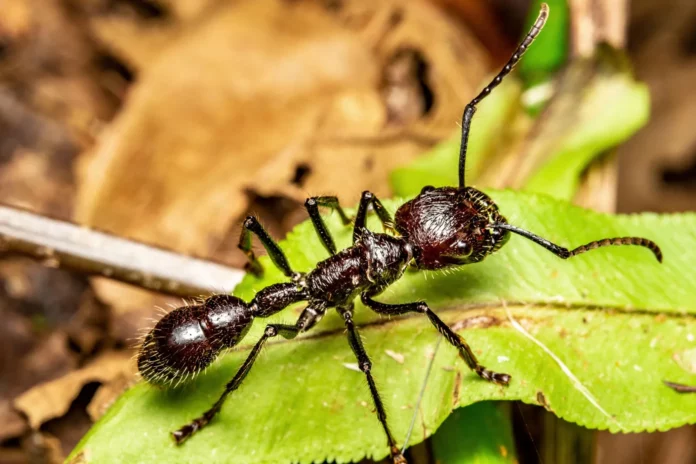The bullet ant (Paraponera clavata), native to the rainforests of Central and South America, is a fascinating and fearsome insect renowned for its extremely painful sting. This remarkable ant species has captured the attention of entomologists and nature enthusiasts alike due to its unique characteristics and behaviors. Here are some intriguing facts about the bullet ant:
Interesting Facts About the Bullet Ant:
- The Painful Sting. The bullet ant is infamous for its sting, which is considered one of the most painful insect stings in the world. The pain is so intense that it is often compared to being shot, hence the name “bullet ant.” The sting’s pain can last for up to 24 hours, causing waves of burning, throbbing, and all-consuming pain.
- Schmidt Sting Pain Index. Entomologist Justin Schmidt, who created the Schmidt Sting Pain Index, rated the bullet ant’s sting at the top of his pain scale. He described the pain as “pure, intense, brilliant pain. Like walking over flaming charcoal with a 3-inch nail embedded in your heel.”
- Habitat. Bullet ants are typically found in the humid rainforests from Nicaragua to the Amazon Basin. They prefer living in the lowland tropical rainforests, where they build their nests at the bases of trees.
- Size and Appearance. Bullet ants are among the largest ant species, with workers reaching up to 1.2 inches (3 cm) in length. They are black or reddish-black, with large mandibles and a well-defined stinger.
- Pain Relief Potential: Despite the intense pain caused by their sting, researchers are studying bullet ant venom for potential medicinal uses. It contains compounds that might be useful in developing new painkillers.
- Intelligent Foraging: Bullet ants exhibit complex foraging behaviors, including the ability to learn and remember the locations of food sources. They can also use landmarks to navigate back to their nests.
- Size Matters: Bullet ant colonies can vary greatly in size, from a few hundred to several thousand individuals. The size of the colony can influence their defensive behavior and foraging efficiency.
- Natural Predators: Despite their fearsome sting, bullet ants have natural predators, including certain bird species and larger insects like the tarantula hawk wasp, which preys on them to feed its larvae.
- Eco-Friendly Engineers: Bullet ants play a role in their ecosystem by aerating the soil through their nest-building activities, which can help promote plant growth and maintain soil health.
- Chemical Warfare: In addition to their painful sting, bullet ants can produce a variety of chemicals that they use for defense and communication. These chemicals can serve as alarm signals to alert other ants of danger.
- Longevity: Bullet ant queens have been known to live for many years, often outliving several generations of worker ants. This long lifespan allows them to maintain stability and continuity within the colony.
